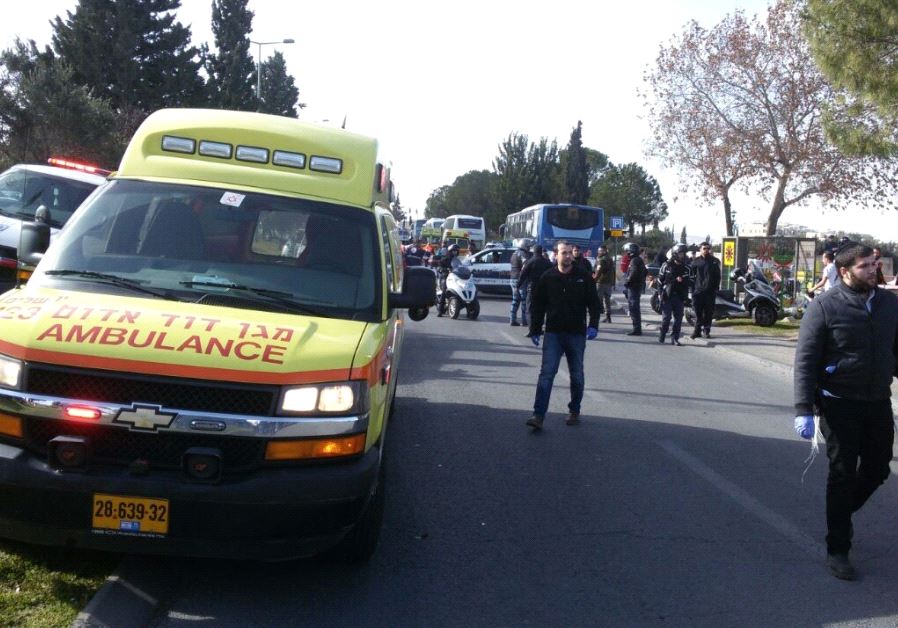Autopsy results prove Jerusalem terrorist was killed by soldiers’ bullets
Conclusion contradicts civilian claim that soldiers were reluctant to shoot due to Azaria verdict.
 Scene of suspected ramming terror attack in Jerusalem, January 8, 2017(photo credit: MAGEN DAVID ADOM)Updated:
Scene of suspected ramming terror attack in Jerusalem, January 8, 2017(photo credit: MAGEN DAVID ADOM)Updated: